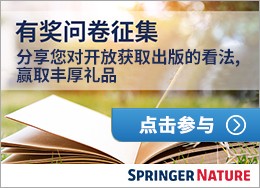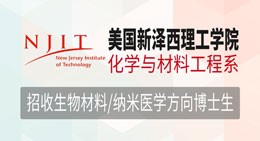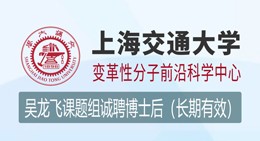-
The Anatomy of Galileo’s Anagram Early Science and Medicine (IF 0.3) Pub Date : 2024-03-15 Eileen Reeves
This essay offers a new reading of Galileo’s most celebrated anagram, incorporating both the prehistory of his late-1610 disclosure concerning the moon-like phases of Venus, and the awkward “leftover letters,” o and y, of the eventual cypher. It argues for a sustained analogy between components of the optical instrument, musical instruments, and particular anatomical structures described by Galen and
-
Book Publishing and Geometrical Skills in the Career of Sébastien Le Clerc Early Science and Medicine (IF 0.3) Pub Date : 2024-03-15 Oded Rabinovitch
Sébastien Le Clerc was born into a family of goldsmiths in Lorraine, and received classical artisanal training. Yet over the course of a highly successful career as an engraver, he also became a widely published scientific author. This paper argues that geometrical skills played a key role in the dual development of Le Clerc’s career, and in his striving for recognition as a man of letters, as well
-
Forbidden Books and Royal Horoscopes: the Practice and Censorship of Astrology in Early Modern Portugal Early Science and Medicine (IF 0.3) Pub Date : 2024-03-15 Luís Campos Ribeiro, Francisco Malta Romeiras
In sixteenth-century Lisbon, Aires Vaz and Manuel Rodrigues were summoned to the Inquisition on account of their astrological practices. Records of the trial of Vaz and Rodrigues provide valuable information regarding the training and practice of an astrologer in sixteenth-century Portugal. Prior to this study, however, our knowledge on these matters was scarce and mostly indirect. In this article
-
Intensity Meters: New Notes and Discoveries on the Invention of Early Modern Precision Instruments Early Science and Medicine (IF 0.3) Pub Date : 2023-12-08 Fabrizio Bigotti
The article sheds light on the invention of early modern precision instruments and their application in medicine, by analysing a neglected work by one of the Italian pupils of the physician Santorio Santori (1561–1636). This source provides vital information on Santorio’s experimental sample, and on the practical use and dimensions of instruments such as thermometers, hygrometers, pulsimeters and precision
-
Jerónimo Muñoz’s Reception of Proclus’ In Euclidem: Philosophy of Mathematics and an Attempt to Prove the Parallel Postulate Early Science and Medicine (IF 0.3) Pub Date : 2023-12-08 Álvaro José Campillo Bo
The goal of this paper is to show – by way of a case study – how the contents of Proclus’ Commentary on the First Book of Euclid’s Elements were incorporated into university teaching in the sixteenth century. I analyse the impact of Proclus on the works of the Spanish mathematician and university professor Jerónimo Muñoz (ca. 1520–1591). In order to do so, I examine two manuscripts: Adnotationes in
-
A Newly Identified Treatise on the Tables of Marseilles (Twelfth Century) and Its Non-Ptolemaic Planetary Theory Early Science and Medicine (IF 0.3) Pub Date : 2023-12-08 C. Philipp E. Nothaft
Two Latin manuscripts in Oxford and Florence preserve diverging recensions of a previously unnoticed astronomical treatise beginning Infra signiferi poli regionem (Oxford recension) or Circulorum alius est sub quo (Florence recension). It can be shown that this anonymous text was originally intended to accompany the Tables of Marseilles in Raymond of Marseilles’s twelfth-century Liber cursuum planetarum
-
Between Matter and Form: Complexion (mizāǧ) as a Keystone of Avicenna’s Scientific Project Early Science and Medicine (IF 0.3) Pub Date : 2023-11-24 Tommaso Alpina
According to Avicenna, the perfect (or complete) disposition (istiʿdād kāmil/tāmm) turns prime matter, which is potentially receptive to every form (or power, or quality), into complected matter, which is endowed with uniform quality. The latter, i.e., complexion (mizāǧ) or complexional form (ṣūra mizāǧiyya), is suitable to receive some particular form (or power, or quality) and not another. The question
-
Can Mixtures Be Identified by Touch? The Reception of Galen’s De complexionibus in Italian Renaissance Medicine Early Science and Medicine (IF 0.3) Pub Date : 2023-11-24 Viktoria von Hoffmann
This article uses Galen’s De complexionibus and its reception as a thread to examine the part played by the sense of touch in the assessment of bodily mixtures. According to Galen, complexions were assessed by touching patients with the skin of the palm of the hand because it is “at the precise midpoint between all the extremes” and, thus, well-mixed. This article examines how this extraordinary claim
-
Can There Be Two Perfectly Identical Complexions? Peter of Abano and Jacopo of Forlì on Avicenna’s Interdict Early Science and Medicine (IF 0.3) Pub Date : 2023-11-24 Gabriella Zuccolin
Avicenna, in Book I of the Canon, within the context of his general doctrine of complexion, presents the eight modes of equality (modi aequalitatis) that concern specific or individual complexions. There he states quite clearly that each individual within the human species possesses a complexion that belongs to that individual exclusively, and with which it is impossible to associate another individual
-
Complexio and the Transformation of Learned Physiognomy ca. 1200–ca. 1500 Early Science and Medicine (IF 0.3) Pub Date : 2023-11-24 Joseph Ziegler
This article surveys the long story of complexio in physiognomic discourse, from Galen’s De complexionibus (De temperamentis) to the great physiognomic manuals of the fifteenth century by Rolandus Scriptoris and Michele Savonarola. We linger, along the way, on various physiognomic texts, most notably the contributions to learned physiognomic discourse of Michael Scotus, William of Aragon, and John
-
Complexio in the Late-Medieval Latin De animalibus Early Science and Medicine (IF 0.3) Pub Date : 2023-11-24 Chiara Beneduce
By focusing on the concept of ‘complexion’ in the major medieval Latin commentaries on Aristotle’s so-called De animalibus, this paper identifies and analyzes a case of the use of the concept of ‘complexion’ outside the medical context or, more precisely, at the intersection of natural philosophy and medicine. The preliminary survey undertaken in this paper suggests that ‘complexion’ was a key concept
-
Complexion of the Members, Complexion of the Body, in Late-Medieval Scholastic Medicine Early Science and Medicine (IF 0.3) Pub Date : 2023-11-24 Joël Chandelier
According to the medical theory of the Middle Ages, every individual had a general complexion for its whole body, but at the same time each organ had a specific complexion, determined by its anatomy, its function, and, of course, the individual. The problem of the relationship between those two types of complexion was, therefore, crucial for the medical practitioner: could a shift in the complexion
-
The Concept of Complexion in Antonio da Parma’s Medical Anthropology Early Science and Medicine (IF 0.3) Pub Date : 2023-11-24 Aurélien Robert
Antonio da Parma (d. 1327) was a philosopher and physician, active in Bologna in the early fourteenth century, and associated with so-called “Bolognese Averroism.” His philosophical works are increasingly better documented. While his medical works are much less studied, his commentary – written between 1310 and 1323 – on the first book of Avicenna’s Canon, had a considerable influence on later commentators
-
The Constitution of Air: Observation and the Limits of Temperament in Italian Renaissance Medical Writing Early Science and Medicine (IF 0.3) Pub Date : 2023-11-24 Craig Martin
The constitution of air served as a key concept for investigations into epidemic disease in sixteenth-century Italy. Its roots stem from the Hippocratic Corpus and Galen’s interpretation of it. In these ancient works, the constitution of air was directly tied to the temperaments of the seasons and winds. Renaissance physicians, such as Giambattista Da Monte and Girolamo Mercuriale, used these texts
-
Eukrasia and Enkrateia: Greco-Roman Theories of Blending and the Struggle for Virtue Early Science and Medicine (IF 0.3) Pub Date : 2023-11-24 Giouli Korobili
A number of ancient philosophers showed a keen interest in understanding whether moral development and the acquisition of virtue is in any way affected by the material constitution of human bodies. Moral education and socialisation were conceived of as having a significant impact on the resulting behaviours, while individual natures, thanks to their special physiological characteristics, were frequently
-
Is Memory a Matter of Complexion? On Memory Disorders in the Latin Commentaries on De memoria (1250–1300) Early Science and Medicine (IF 0.3) Pub Date : 2023-11-24 Véronique Decaix
This article focuses on the use of the theory of complexions made by medieval commentators to explain the pathologies or dysfunctions of memory as outlined by Aristotle in his treatise on Memory and Reminiscence. More particularly, it focuses on the Aristotelian issues of the young and the old, the slow- and quick-witted, condensed in the Latin commentaries into an aporia that we will call the “aporia
-
Temperament and the Senses: The Taste, Odor and Color of Drugs in Late-Renaissance Galenism Early Science and Medicine (IF 0.3) Pub Date : 2023-11-24 Elisabeth Moreau
According to the medical tradition, the temperament of bodies came from the balance of their primary qualities – hot, cold, dry, and moist. However, physicians associated additional sensory properties with temperament in the field of pharmacology. These sensations included taste, color, and odor, which allow an appraisal of the constitution and active powers of drugs. The present paper examines this
-
Tempering Occult Qualities: Magnetism and Complexio in Early Modern Medical Thought Early Science and Medicine (IF 0.3) Pub Date : 2023-11-24 Christoph Sander
In medieval natural philosophy and medicine, magnetic attraction was the most commonly invoked example for the effects of so-called ‘occult qualities’ or ‘occult powers.’ According to this conception – which dates back to Galen, Alexander of Aphrodisias, and Avicenna – magnetism was caused by an insensible quality and not, therefore, by one of the four primary qualities (hot, cold, wet, dry). Already
-
La Luce (1698) by Giovanni Michele Milani – A Final Attempt at Reconciling Atomism and Religion in Seventeenth-Century Rome? Early Science and Medicine (IF 0.3) Pub Date : 2023-07-12 Maria Fiammetta Iovine
In the poem La Luce, composed in 1685 and dedicated to Christina of Sweden, Giovanni Michele Milani propounds a mechanical and vitalist (meta-)physics of light that complies with Christian tenets by adopting a peculiar version of Democritean atomism. His lecture for the Roman Simposiaci Academy indicates the extent of Milani’s dissatisfaction with Aristotelian philosophy. While he attended the Physico-mathematical
-
Sharing the Knowledge at Habsburg Medical Faculties in the Baroque Era: The Case of Jan František Löw’s Reading List for Medical Students in Prague (1693) Early Science and Medicine (IF 0.3) Pub Date : 2023-07-12 Karel Černý
In 1693, professor Jan František Löw von Erlsfeld published a reading list for the students of medicine at Charles-Ferdinand University in Prague. The list records over 350 authorities from Aristotle to Johann Zwelfer and offers a unique insight into the structure of medicine and knowledge-sharing. It also points towards the fact that the Prague faculty was developing intellectual connections with
-
Spirits and the Prolongation of Life in Francis Bacon: Commonality and Difference between the Inanimate and the Animate Early Science and Medicine (IF 0.3) Pub Date : 2023-07-12 Kazuhiro Shibata
This study reconsiders Francis Bacon’s ideas on spirits, death, and the prolongation of life through a chronological examination of his works. His conception of death has often been considered unique because it presupposed a common material basis for the dissolution of inanimate things and the death of human beings. However, his focus on this commonality seems to have faded gradually – though not completely
-
Astrological Self-Government at the Fifteenth-Century Court of Bourbon Early Science and Medicine (IF 0.3) Pub Date : 2023-06-08 Steven Vanden Broecke
In articulating the uses of their art, late-medieval astrologers often invoked the maxim that “the wise man will rule the stars” (sapiens dominabitur astris). However, it is by no means clear whether this invocation sought to emphasize ‘domination’ over the natural and social world, or the ontological self-government that is at stake in the pursuit of ‘wisdom’. Many historians have interpreted the
-
Francis Bacon on Self-Care, Divination, and the Nature–Fortune Distinction Early Science and Medicine (IF 0.3) Pub Date : 2023-06-08 Silvia Manzo
In presenting self-preservation as the most general law of nature, set at the summit of the structure of the natural world, Francis Bacon characterized the universal appetite for self-preservation as an innate instinct which, in the case of living beings, is primarily associated with the emotion of fear. Bacon’s philosophy offers several techniques of self-care to manage the fear of accidents of fortune
-
Governing Health: The Doctor’s Authority, the Patient’s Agency, and the Reading of Regimina sanitatis Literature Early Science and Medicine (IF 0.3) Pub Date : 2023-06-08 Marilyn Nicoud
This article examines the ways in which, in the last centuries of the Middle Ages, the emergence of a literature aimed at preserving health by means of dietary rules or advice establishes a connection between the physician’s authority in matters of health and the capacity of patients and readers to take care of themselves when they are in good health. Born at the same time of social demand and medical
-
Shadows of the Thrown Spear: Girolamo Cardano on Anxiety, Dreams, and the Divine in Nature Early Science and Medicine (IF 0.3) Pub Date : 2023-06-08 Jonathan Regier
Girolamo Cardano (1501–1576), a preeminent natural philosopher, physician and astrologer of the sixteenth century, is known for the great diversity of his intellectual pursuits and writings. Across much of his work, we find an overriding concern with the dangers of human life, how those dangers might be foreseen, and how their effects can be mitigated. This essay begins by considering the epistemic
-
Cabanis’ Kunst der Koexistenz lebender Systeme Early Science and Medicine (IF 0.3) Pub Date : 2022-12-26 Tobias Cheung
Zusammenfassung Cabanis’ „Kunst der Koexistenz“ des Menschen in sozialen Ordnungen beruht auf dessen „tierischer Existenz“ als ein individuiertes physiologisches „Gesamtsystem“, das sich seinerseits aus verschiedenen, interagierenden „Reaktionszentren“ zusammensetzt und in einem bestimmten Verhältnis zur es umfassenden „Außenwelt“ steht. In diesem Aufsatz untersuche ich die Doppelstruktur physiologischer
-
Images & Color: The Strasbourg Printer Johann Schott (1477–1548) and His Circle Early Science and Medicine (IF 0.3) Pub Date : 2022-12-26 Domenico Bertoloni Meli
While most Renaissance scholars working on compendia of learning, geography, surgery, legal history, art history, the Reformation, and botany will be familiar with the name of Johann Schott, few have appreciated the range and impact of the Strasbourg printer’s publications. Here I discuss a handful among the over two hundred books and other materials he printed: Gregor Reisch’s Margarita Philosophica;
-
In Search of the Unicorn’s Virtue in a Rhino Horn Cup: Consumption of Rhino Horns and the Production of Knowledge in Early Modern Lisbon Early Science and Medicine (IF 0.3) Pub Date : 2022-12-26 Bruno A Martinho, António Manuel Lopes Andrade
This article focuses on the analysis of a medical consilium about a rhino horn written around 1570 by the Portuguese royal physician Jorge Godines to the Spanish ambassador in Lisbon. It sheds light on the processes of knowledge production concerning rhino and unicorn horns in early modern Lisbon. Through micro-historical analysis, we will demonstrate how demand, supply, and the availability of specimens
-
The Distant Action of the Heavens in Girolamo Borri’s Tidal Theory Early Science and Medicine (IF 0.3) Pub Date : 2022-12-06 Pietro Daniel Omodeo
The Aristotelian professor of natural philosophy and courtier at the Medici in Florence, Girolamo Borri, developed a theory based on heat to explain the tidal motions of the sea. In his dialogues on this phenomenon, he deemed that tides follow from the ‘moderate’ simmering of the waters as an effect of lunar light. His tidal theory displaced the theory of the Moon’s distant action on terrestrial waters
-
Explaining Astrological Influence with Cartesian Natural Philosophy: Peter Megerlin’s Manuscript Astrologia Cartesiana (ASHB1530, circa 1680) Early Science and Medicine (IF 0.3) Pub Date : 2022-12-06 Rodolfo Garau
Action at a distance was one of the key features of astrology. Once a thriving discipline, astrology in the early modern period entered a crisis that ultimately culminated in its marginalization from the domain of scholarly recognition. Critics of astrology took issue, among other things, with the causative process of the supposed astrological action at a distance – traditionally based on the light
-
Fascination and Action at a Distance in Francis Bacon Early Science and Medicine (IF 0.3) Pub Date : 2022-12-06 Doina-Cristina Rusu
Throughout his writings, Francis Bacon shows a great interest in the power of the imagination, both on other minds and on other bodies, a crucial part of natural magic. Convinced of the overall value of magic, Bacon nevertheless takes issue with the corrupt state into which he saw this discipline as having descended, overrun with false theories and invented stories. Bacon’s reform of experimental natural
-
How to Send a Secret Message from Rome to Paris in the Early Modern Period: Telegraphy between Magnetism, Sympathy, and Charlatanry Early Science and Medicine (IF 0.3) Pub Date : 2022-12-06 Christoph Sander
In 1558, the famous natural magician Giambattista della Porta was the first to allude to a method of transmitting secret messages by using manipulated magnetic compasses. Soon thereafter, this idea, known in modern historiography as ‘magnetic telegraphy’, was spelled out and advertised by many early modern scholars as a promising technology of communication by action at a distance. In 1609, Daniel
-
Hydrocephalus in Context: A History from Graeco-Roman Sources Early Science and Medicine (IF 0.3) Pub Date : 2022-10-14 Isabella Bonati
The history of the scientific description and conceptualisation of the condition named “hydrocephalus” goes back to Graeco-Roman antiquity. The present article provides an extensive examination of the ancient Greek and Latin texts on the topic, including the only extant medical papyrus dealing with it. A thorough investigation of these primary sources allows us to expand our knowledge of this disorder
-
Iranian World Plant Species in the European Network of Botanical Information Exchange in the Sixteenth Century Early Science and Medicine (IF 0.3) Pub Date : 2022-10-14 Ashkan Avali Pouryan
Geographic discoveries in the sixteenth century, alongside methodical reforms in the practice of natural history, created a situation that was conducive for information exchange between European agents and local informants and scholars outside of Europe. These contacts, in turn, acted as a strong stimulus for change in European natural history. Until now, research on this process of transformation
-
Tycho Brahe’s Health and Death: What Can We Learn from the Trace Element Levels Found in His Hair and Bone Samples? Early Science and Medicine (IF 0.3) Pub Date : 2022-10-14 Vladimír Karpenko, Jan Kučera
Based on the analysis of Tycho Brahe’s hair and bones for the presence of elevated levels of the elements iron (Fe), cobalt (Co), arsenic (As), silver (Ag) and gold (Au), this paper tries to find their likely sources and to judge whether the unusual concentrations in which they were found could have been due to some form of medication. On the basis of an osteopathological study, an attempt is made
-
Could Siberian ‘Natural Curiosities’ Be Replaced? Bioprospecting in the Eighteenth-Century Early Science and Medicine (IF 0.3) Pub Date : 2022-09-02 Matthew P. Romaniello
This article focuses on three unique products circulating in the eighteenth-century marketplace – castor, mammoth tusks, and asbestos – and highlights the role of naturalists working for the Royal Society in London and at the Russian Academy of Sciences in St. Petersburg in promoting the consumption of these goods. Naturalists’ scientific investigations of these products were essential to distinguish
-
Practical Knowledge and the Rhetoric of Experience: Three Italian Surgeons and Their Observations Early Science and Medicine (IF 0.3) Pub Date : 2022-09-02 Maria Pia Donato
This article deals with early modern surgical case literature, more specifically with printed collections of observations in surgery. It examines the work of late seventeenth- to late eighteenth-century Italian practitioners from different backgrounds and of different statuses, and highlights the complexity of cognitive and social purposes pervading the genre, besides that of sharing empirical knowledge
-
A Note on Equiprobability Prior to 1500 Early Science and Medicine (IF 0.3) Pub Date : 2022-07-10 Mark Thakkar
Rudolf Schuessler has argued that sixteenth-century thinkers developed a concept of equal probability that was virtually absent before 1500 and that may have contributed to the birth of mathematical probability shortly after 1650. This note uses additional textual evidence to argue that the concept of equal probability was in fact generally available to medieval thinkers. It is true that ascriptions
-
The Concept of Changing Laws of Nature in the Baconian Corpus from 1597 to 1623 Early Science and Medicine (IF 0.3) Pub Date : 2022-07-07 Aderemi Artis
In his Confession of Faith, Francis Bacon makes the striking claim that the laws of nature have changed over time. While the connections between this claim and theology are outlined in the Confession itself, it is not clear what role the proposal of mutable laws of nature might play in Bacon’s program of reform for natural philosophy. I argue that the notion that the laws of nature have changed over
-
Shadows in Medieval Optics, Practical Geometry, and Astronomy: On a Perspectiva Ascribed to Thomas Bradwardine Early Science and Medicine (IF 0.3) Pub Date : 2022-07-07 Lukáš Lička
In examining the roles of the shadow (umbra) in medieval science, this paper analyses a hitherto unstudied early fourteenth-century optical treatise with the incipit Perspectiva cum sit una (PCSU), which, on the basis of medieval evidence, may arguably be attributed to Thomas Bradwardine. The third part of this treatise, on shadows, presents the doctrine of three shadow shapes – a doctrine which was
-
The Southern Sky and the Renovation of the Ptolemaic Tradition in Sixteenth-Century Italian Astrologers Early Science and Medicine (IF 0.3) Pub Date : 2022-07-07 Virginia Iommi Echeverría
This article examines the use of astronomical observations of the austral sky in treatises written by Italian astrologers during the sixteenth century. The references made to navigators’ accounts and diagrams of southern stars in the works of Agostino Nifo, Girolamo Cardano, Francesco Giuntini and Francesco Pifferi show their attempts to include previously unknown stars in Ptolemaic framing. Although
-
The Poison Trials: Wonder Drugs, Experiment, and the Battle for Authority in Renaissance Science, written by Alisha Rankin Early Science and Medicine (IF 0.3) Pub Date : 2022-03-23 Sabrina Minuzzi
-
Physico-theology: Religion and Science in Europe, 1650–1750, written by Ann Blair and Kaspar von Greyerz Early Science and Medicine (IF 0.3) Pub Date : 2022-03-23 Tricia Ross
-
La thériaque: Histoire d’un remède millénaire, edited by Véronique Boudon-Millot and Françoise Micheau Early Science and Medicine (IF 0.3) Pub Date : 2022-03-23 Simone Mucci
-
La Science prise aux mots: enquête sur le lexique scientifique de la Renaissance, edited by Violaine Giacomotto-Charra and Myriam Marrache-Gouraud Early Science and Medicine (IF 0.3) Pub Date : 2022-03-23 Chiara Cacciola
-
A Jumble of Writings: Commentaries on Aristotle’s De Longitudine et Brevitate Vitae Attributed to Adam of Buckfield Early Science and Medicine (IF 0.3) Pub Date : 2022-03-23 Tilke Nelis
The translatio vetus of Aristotle’s De longitudine et brevitate vitae – a medieval text also known under the title of De morte et vita – was commented upon by the Oxford Master Adam of Buckfield in the thirteenth century. Inventories record two commentaries, which are either anonymous or unclearly ascribed. These writings are usually attributed by modern scholarship to Buckfield, though not always
-
The Sciant artifices in the Work of Albert the Great: Towards Two Kinds of Transmutation? Early Science and Medicine (IF 0.3) Pub Date : 2022-03-23 Athanasios Rinotas
A few decades ago, William Newman drew attention to the significance of the medieval alchemical debate over the possibility of transmuting metals, which was closely connected to the Avicennan phrase known as Sciant artifices. Newman pointed to Albert the Great (ca. 1200–1280) as one of the participants in this debate. While Newman has covered Albert’s engagement with this Avicennan dictum only partially
-
A Wine a Day …: Medical Experts and Expertise in Plutarch’s Table Talk Early Science and Medicine (IF 0.3) Pub Date : 2022-03-23 Michiel Meeusen
This contribution examines the important role that medical experts and expertise played at convivial networking events in the High Roman Empire, as imagined by a non-specialist in the field, viz. the famous Platonist intellectual Plutarch of Chaeronea (ca. 45–120 CE). An analysis of a number of medical problems discussed in his Table Talk will yield fresh insights into the social and intellectual role
-
Early Franciscans in England: Sickness, Healing and Salvation Early Science and Medicine (IF 0.3) Pub Date : 2021-12-15 Peter Murray Jones
From their first arrival in England in 1224, the Franciscans were concerned with the treatment of ill-health for both practical and spiritual reasons. Many brothers fell sick, and their illnesses required both interpretation and treatment. Some friars practised healing on their brethren and on lay patients. This article will focus on the question of the relationship between the religious vocation of
-
Faith in Drugs: The Material and Immaterial Effects of Medication in the Early Modern French Catholic World Early Science and Medicine (IF 0.3) Pub Date : 2021-12-15 Justin Rivest
This article explores a set of medications, called les remèdes des pauvres, that were distributed from the late seventeenth century onward to the sick poor of rural France and to French missions abroad. Although it was eventually absorbed into the French state as a form of royally sponsored poor relief, this drug distribution network began in 1670 as a distinctly ecclesiastical endeavour, aimed at
-
From New Spain to Damascus: Ottoman Religious Authorities and the Making of Medical Knowledge on Tobacco Early Science and Medicine (IF 0.3) Pub Date : 2021-12-15 Aslıhan Gürbüzel
This article examines the translation, circulation, and adaptation of the medical opinion of Spanish physician Nicolas Monardes (d. 1588) on tobacco in the Ottoman Empire. In addition to medical and encyclopedist authors, the spread of new medical knowledge in learned and eventually popular registers was the result of the efforts of religious authorities. These latter authorities, namely jurists, Sufis
-
Inquisitor as Physician: Friars, Inquisitors, Women, and Medical Knowledge in Early Colonial New Spain (1530–1650) Early Science and Medicine (IF 0.3) Pub Date : 2021-12-15 Jacqueline Holler
New Spain was the site not only of one of the largest-scale missionary enterprises in Christian history, but also of a prolonged encounter among diverse medical traditions of Mesoamerican, African, and European origin in which male missionaries were central. Given the paucity of licensed physicians in the colony, religious involvement in medical practice remained significant throughout the colonial
-
Mechanica Medicina Sacra: Biblical Vegetarianism in Philippe Hecquet’s Theological Medicine Early Science and Medicine (IF 0.3) Pub Date : 2021-12-15 Julia Reed
In the early eighteenth century, the French Jansenist physician Philippe Hecquet began publishing prolifically on the benefits of what he called “meatless medicine,” calling for a “Catholic cook” to guide France’s physical, moral, and spiritual health. This paper analyzes Hecquet’s defense of vegetarianism as an early modern example of a distinct kind of Biblical medicine – what Hecquet termed “theological
-
Medicine, God, and the Unseen in Eleventh/Seventeenth-Century Morocco Early Science and Medicine (IF 0.3) Pub Date : 2021-12-15 Justin Stearns
In the late seventeenth century, the head of the Salihiyya Sufi lodge in the far south of Morocco, Abu al-ʿAbbas Sidi Ahmad al-Salihi al-Dar‘i (d. 1144/1731), wrote a poem of over a thousand lines on medicine, a long composition that went on to enjoy great popularity. The Worthy Gift of Medicine (al-Hadiya al-maqbula fi l-tibb) drew on a wide range of sources, including the Arab-Galenic tradition and
-
Prayer and Physic in Seventeenth-Century England Early Science and Medicine (IF 0.3) Pub Date : 2021-12-15 Lauren Kassell, Robert Ralley
Historians have often represented prayer as an instrumental response to illness. We argue instead that prayer, together with physic, was part of larger regimes to preserve health and prevent disease. We focus on early modern England, through the philosophical writings of the physician, Robert Fludd, and the medical records of the clergyman, Richard Napier. Fludd depicted health as a fortress and illness
-
Characterisations in Britain of Isaac Newton’s Approach to Physical Inquiry in the Principia between 1687 and 1713 Early Science and Medicine (IF 0.3) Pub Date : 2021-11-11 Jip van Besouw, Steffen Ducheyne
In order to gain a better understanding of the impact and circulation of the first edition of the Principia, we offer an analysis of public perceptions in Britain of Isaac Newton’s approach to physical inquiry in the Principia between the appearance of its first and second editions, in 1687 and 1713, respectively. We treat Newton’s readers as actors with distinctive scholarly backgrounds and interests
-
Mechanism, Occasionalism and Final Causes in Johann Christoph Sturm’s Physics Early Science and Medicine (IF 0.3) Pub Date : 2021-11-11 Christian Henkel
This paper argues that mechanism, occasionalism and finality (the acceptance of final causes) can be and were de facto integrated into a coherent system of natural philosophy by Johann Christoph Sturm (1635–1703). Previous scholarship has left the relation between these three elements understudied. According to Sturm, mechanism, occasionalism and finality can count as explanatorily useful elements
-
Princess Elisabeth’s Cautions and Descartes’ Suppression of the Traité de l’Homme Early Science and Medicine (IF 0.3) Pub Date : 2021-11-11 Harold J. Cook
Why did Descartes not publish his chief physiology work during his lifetime? Descartes considered that the physiological and medical conclusions that could be drawn from his philosophy were fundamental to his intellectual project, and an apparently complete work was circulating among friends in 1641 but was only published more than a decade after his death, as De Homine (1662) and Traité de l’Homme
-
Women, Philosophy and Science: Italy and Early Modern Europe, edited by Sabrina Ebbersmeyer and Gianni Paganini Early Science and Medicine (IF 0.3) Pub Date : 2021-11-11 Iulia Z Mihai
-
Documenti e studi sulla tradizione filosofica medievale, edited by Amos Bertolacci and Gabriele Galluzzo Early Science and Medicine (IF 0.3) Pub Date : 2021-11-11 Tracy Wietecha


























 京公网安备 11010802027423号
京公网安备 11010802027423号